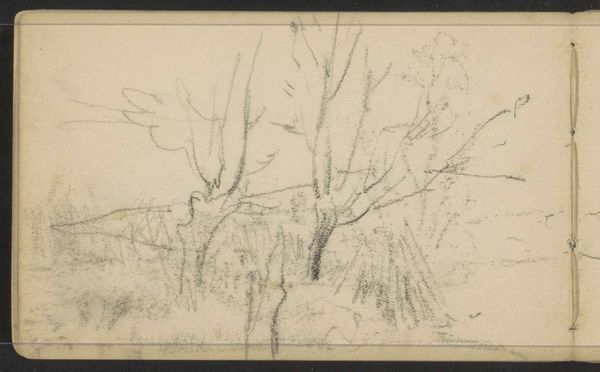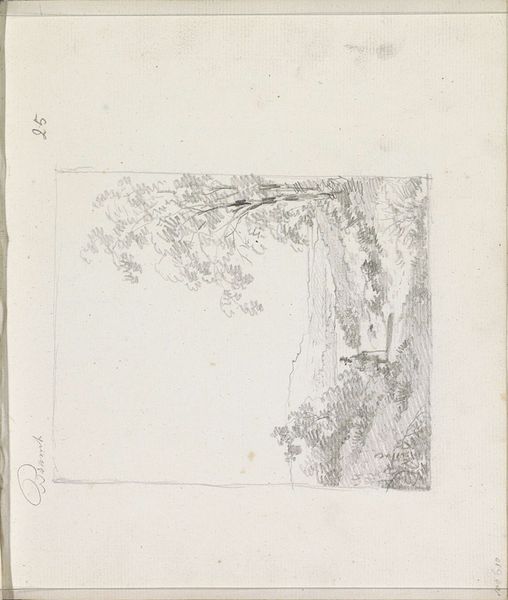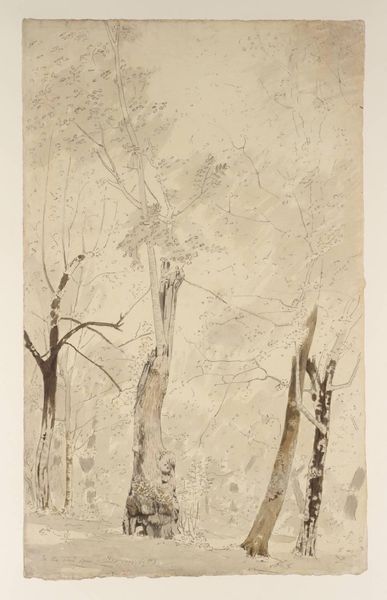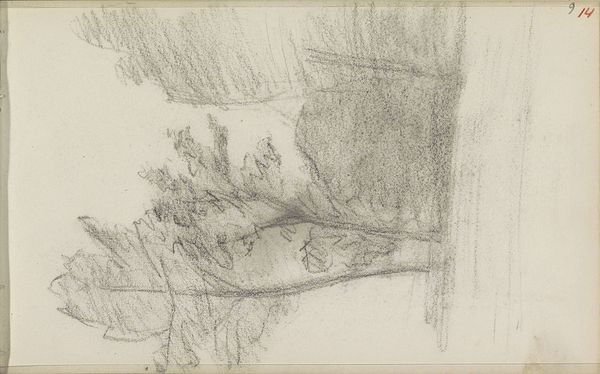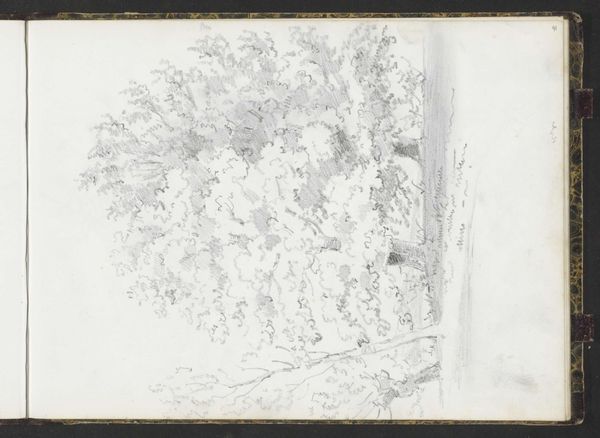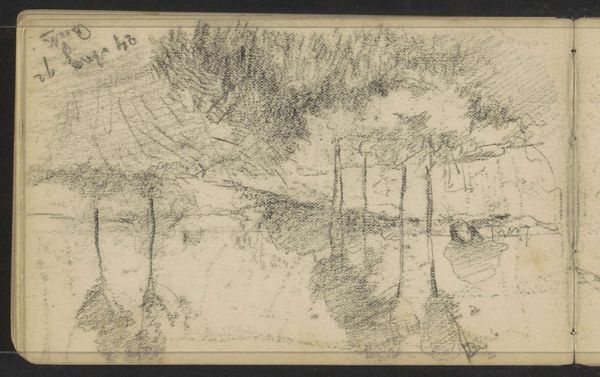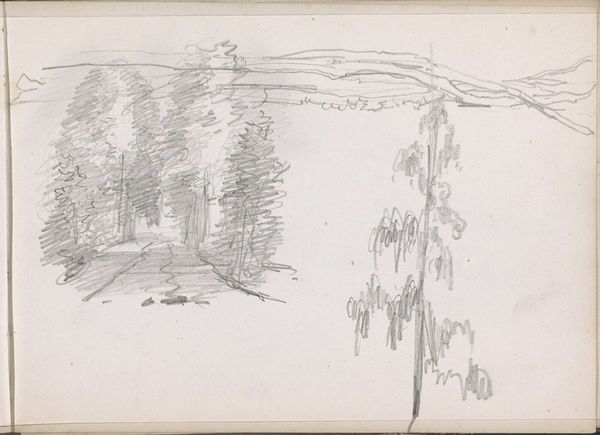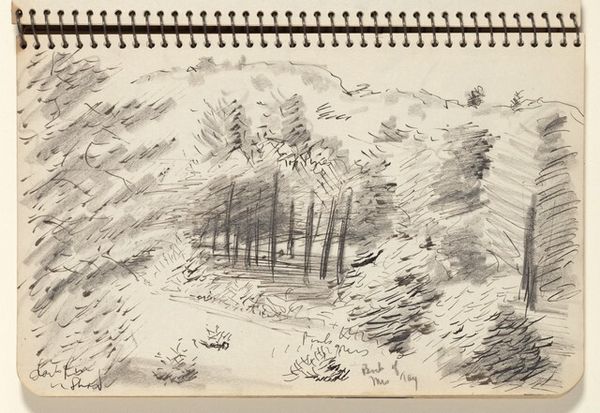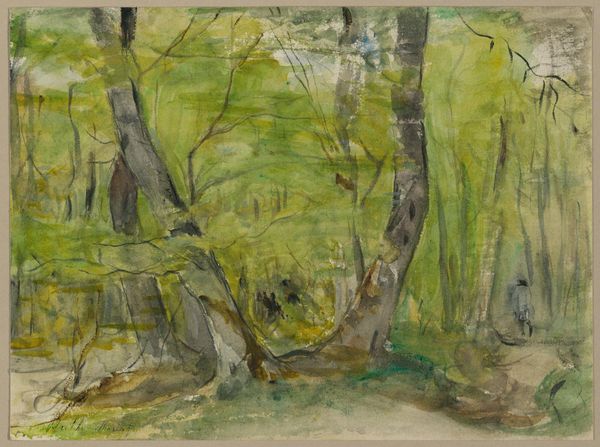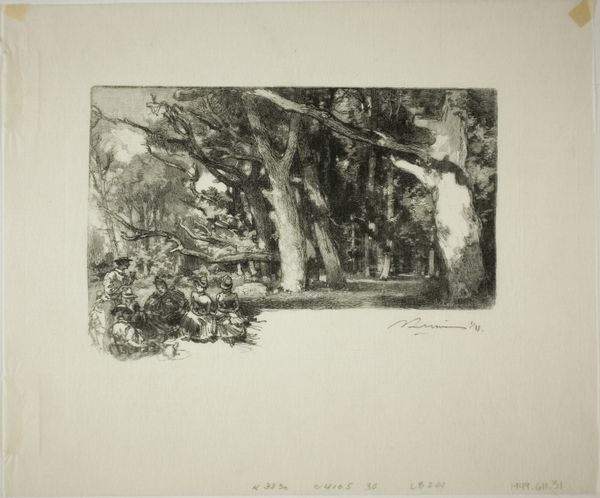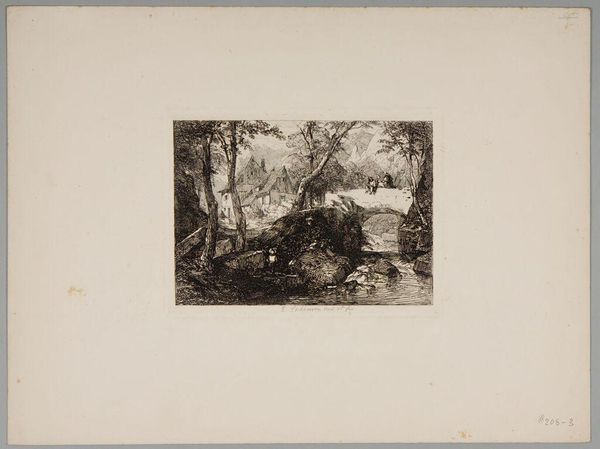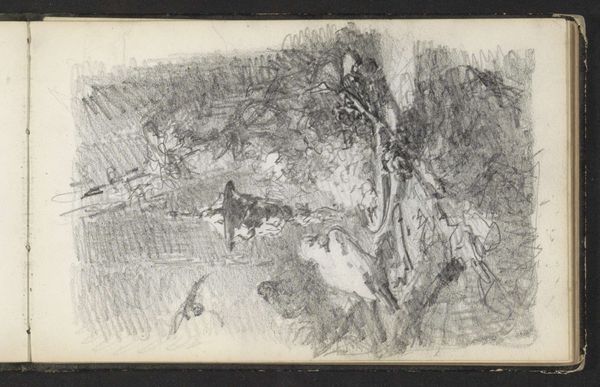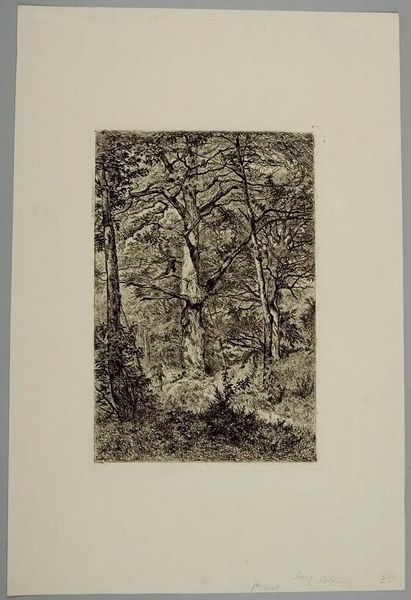
drawing, paper, watercolor
#
drawing
#
water colours
#
narrative-art
#
landscape
#
figuration
#
paper
#
watercolor
#
romanticism
#
history-painting
#
mixed medium
#
mixed media
Copyright: Public domain
Curator: Looking at this piece by Luc-Olivier Merson, entitled "Projet d'illustration pour Macbeth - assassinat de Banquo," the first thing that strikes me is the texture. The paper itself is aged, stained even. The drawing uses watercolor, a challenging medium in its own right. Editor: Immediately, the narrative pulls me in. The density of the forest depicted, coupled with the visible act of violence, it speaks to the anxieties around power, loyalty, and fate—timeless themes, certainly, but made intensely relevant by their continual exploitation throughout history and contemporary society. How was the choice of watercolor meaningful in conveying this particular type of scene and historical context? Curator: The loose application of watercolor contributes to the overall shadowy atmosphere, appropriate for this scene of murder and betrayal from Shakespeare’s Macbeth. If one thinks about the cost of materials—paper, pigments—relative to other methods of illustration and to Merson’s potential audience, one could surmise this quick rendering points to the work’s possible intention: not a final masterpiece, perhaps, but a study. Editor: I see it as more than just a study. I consider Macbeth to reflect issues surrounding patriarchal structures—both within the family, or clan, and within the state. Banquo's murder, in particular, represents the lengths to which Macbeth is willing to go to preserve his power in this male-dominated world. I agree the handling of materials contributes to the ambiance, however. Look at the quick strokes defining their clothing—these could very well convey a quick moment of intense betrayal or uncertainty for everyone involved. Curator: Well, and uncertainty on the part of the illustrator too. A sketch like this is the record of the artist’s own wrestling with these same ideas of power and uncertainty you mention. By understanding how these were materially realized, we learn about his role as the producer in that process. The paper shows bleed marks in lower areas which is a typical flaw with the materiality of watercolors but creates depth for the image here. Editor: Interesting perspective, framing Merson's creative process in that way. Overall, revisiting familiar narratives like this provides opportunity to reflect on how themes of ambition and violence continue to resonate today, but as historians, we need to acknowledge that art-making and artistic labor occurs in highly situated contexts that shape artistic meanings. Curator: I completely agree, understanding the labor of illustration adds context that brings these figures to life, quite contrary to their painted fate.
Comments
No comments
Be the first to comment and join the conversation on the ultimate creative platform.
